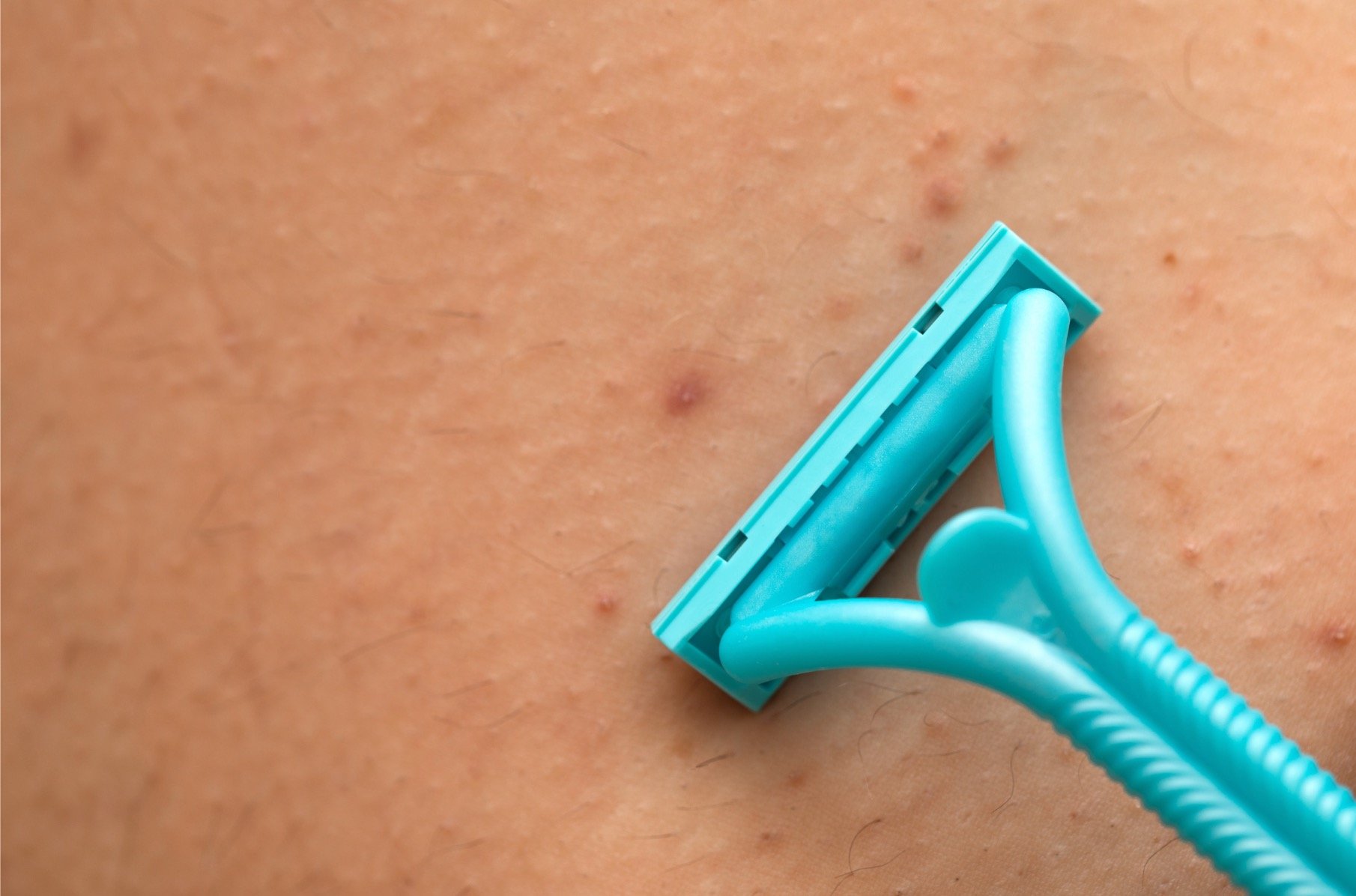Folliculitis (razor burn)
What is folliculitis (razor burn)?
Folliculitis is red bumps or pimples that form around hair follicles—often on the scalp, neck, chest, back, or thighs. When it appears after shaving, it’s called razor burn. It looks similar to acne and usually improves with the same treatments.
What causes folliculitis?
It’s not fully understood why some people get folliculitis and others don’t. Often, bacteria enter a hair follicle through shaving, tight clothing, or hats/helmets, leading to a red bump or pimple.
Stress also plays a role—physical, mental, or emotional stress can trigger flare-ups in your usual spots. For example, I often notice 3–4 new bumps on the back of my head before a big presentation or deadline.
How do I treat folliculitis?
Most people improve with a few simple steps, though it may take some trial and error:
Medicated acne wash – Use a benzoyl peroxide wash (5% or less) in the shower. I like CeraVe Acne Foaming Cream Cleanser (4%) or La Roche-Posay Effaclar face wash.
Switch razors – Try a new Skinguard blade (or Venus’s version for women) if shaving makes bumps worse.
Alcohol hand sanitizer – After showering, rub Purell on problem areas. It dries quickly and reduces bacteria. You can still style your hair or apply a good moisturizer over it. And, if you believe the label, it kills 99.99% of bacteria.
Hibiclens wash – Leave chlorhexidine on the skin for 5–10 minutes before rinsing.
Steroid ointment – Use hydrocortisone ointment twice daily if bumps are itchy or red (avoid long-term overuse – can cause thinning, stretch marks, and easy bruising.
Reduce stress – Stress makes folliculitis flare. Prep your skin before big deadlines or stressful events.
Eat healthier – Poor diet, especially during stress, worsens folliculitis. Aim for more whole-food, plant-based meals.
Steps for using a medicated acne wash or Hibiclens:
In the shower, rinse your problem areas, then:
Apply benzoyl peroxide wash or Hibiclens wash and leave it on for 5–10 minutes so the medication can soak in before rinsing.
Use benzoyl peroxide wash or Hibiclens wash once or twice daily. You do not need another face/body wash. Avoid exfoliating scrubs.
Notes:
Benzoyl peroxide can cause dryness. Apply plenty of moisturizer until your skin adjusts and acne improves (usually after a few weeks).
Benzoyl peroxide can bleach towels and clothing.
What if my folliculitis is caused by shaving?
If bumps appear in areas you shave (face, neck, scalp, thighs, groin):
Pre-treat – Wash areas with benzoyl peroxide or Hibiclens before shaving.
Switch razors – Try:
A new Skinguard blade (or Venus’s version for women)
Single-use disposable razors (or for women)
An electric razor (or fancy version) that doesn’t shave too close
Disinfect your razor – Soak blades in a cup of warm water with Hibiclens for 5 minutes while you get ready.
⚠️ Don’t leave your razor in Hibiclens all day—it will rust. Never shave with rusty blades.
What if my folliculitis isn’t getting better?
Most people improve with the steps above, but sometimes prescription creams or antibiotics are needed. In severe or scarring cases, isotretinoin (Accutane) may help. If over-the-counter treatments aren’t enough, look for a board-certified dermatologist in your area. If you are in or near Utah, see one of my excellent colleagues at the University of Utah or me virtually with Honeydew.
DISCLAIMER
The statements expressed and content of this website are not intended to be a substitute for professional medical advice. Readers should seek their own professional counsel for any medical condition or before starting or altering any treatment, exercise, or dietary plan. Please see our full disclaimer here.

